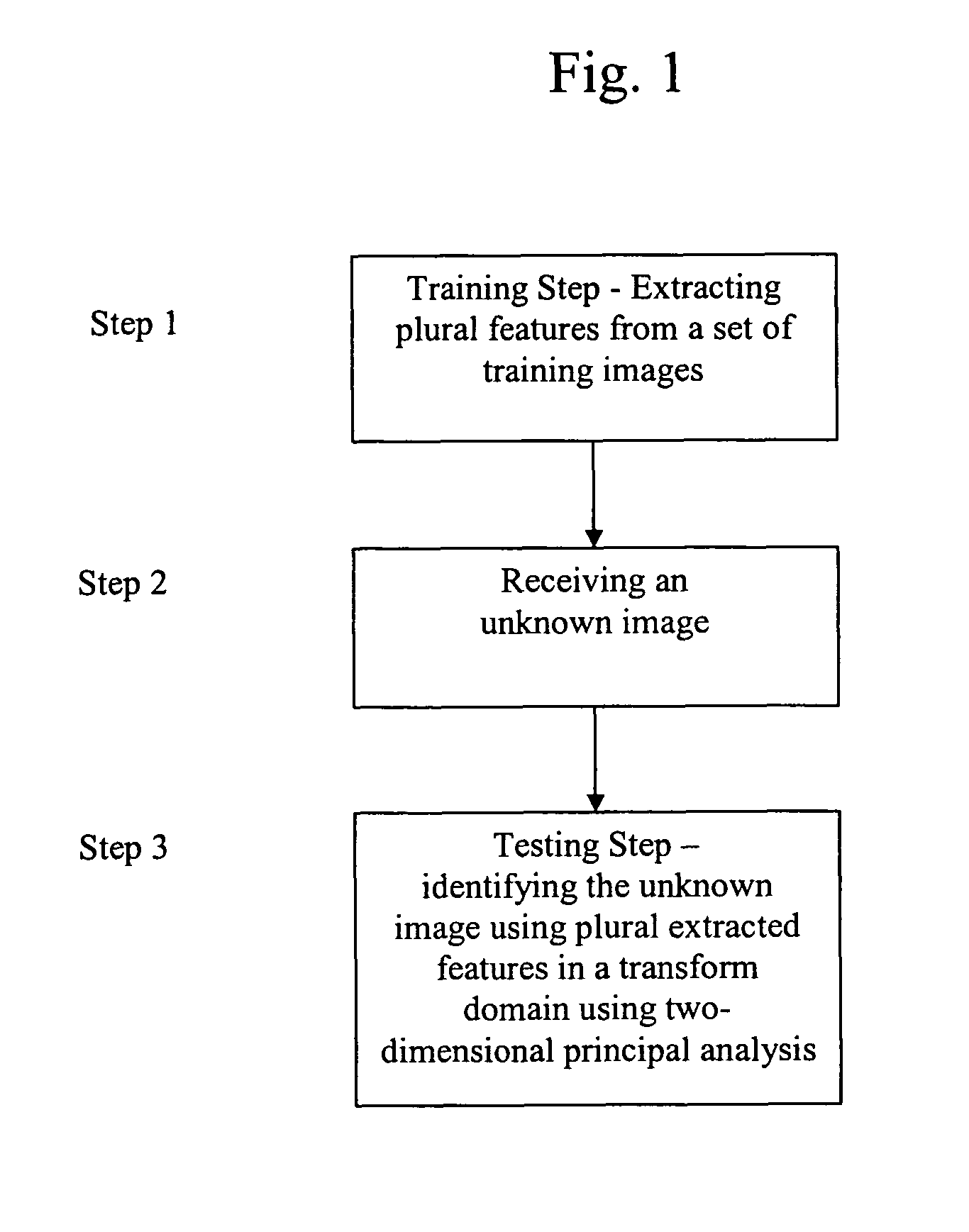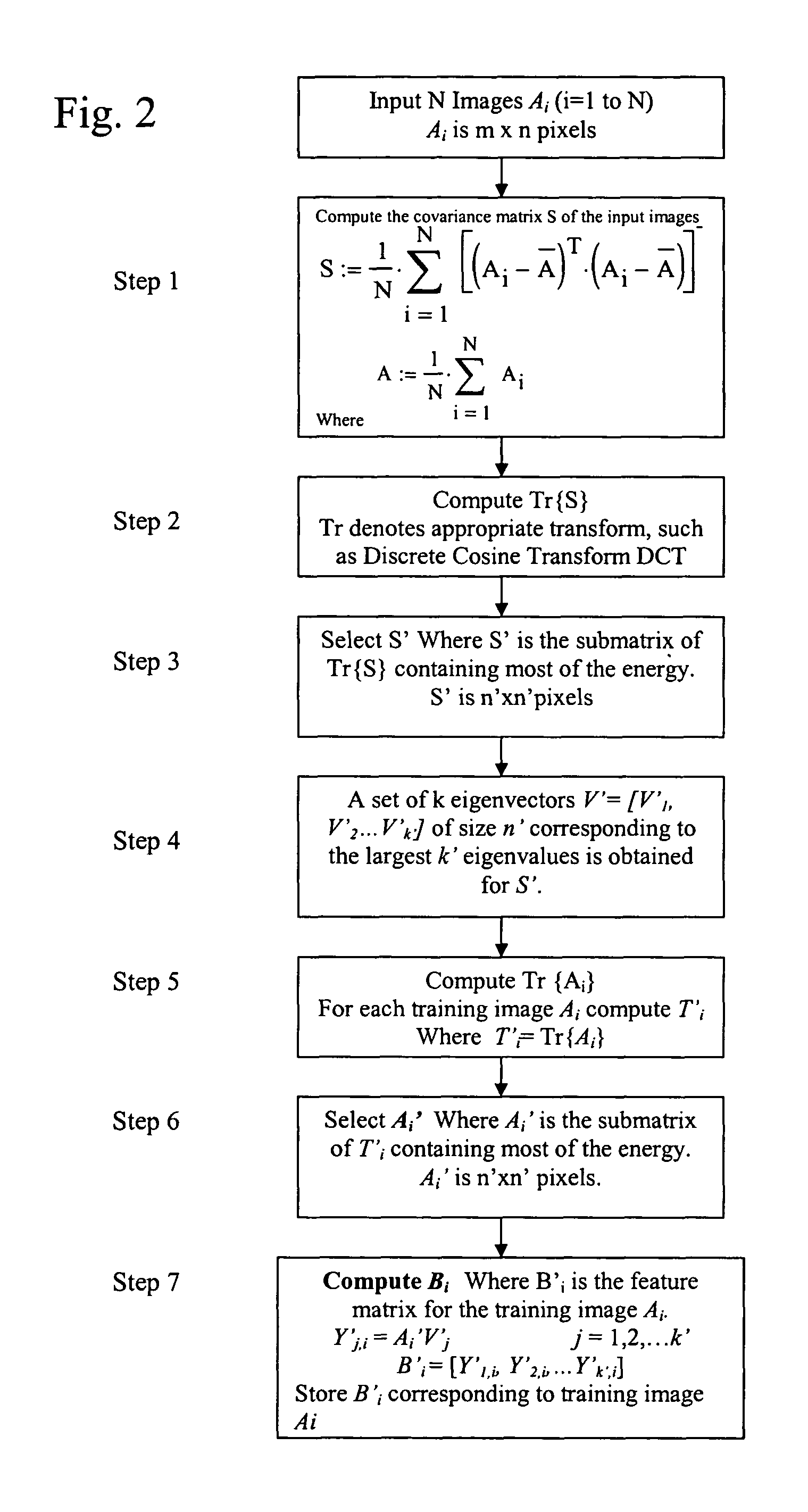Recognition and classification based on principal component analysis in the transform domain
a transform domain and principal component technology, applied in the field of facial recognition, can solve the problems of not being as efficient as pca in terms of storage requirements, and achieve the effect of reducing storage and computational requirements and excellent spatial domain recognition accuracy
- Summary
- Abstract
- Description
- Claims
- Application Information
AI Technical Summary
Benefits of technology
Problems solved by technology
Method used
Image
Examples
Embodiment Construction
[0028]Before explaining the disclosed embodiments of the present invention in detail it is to be understood that the invention is not limited in its application to the details of the particular arrangements shown since the invention is capable of other embodiments. Also, the terminology used herein is for the purpose of description and not of limitation.
[0029]The method, system, apparatus and device of the present invention provides steps that represent the images and their covariance matrix in the transform domain. Typically, the energy in facial images is concentrated in the low spatial frequency range. Representation of the images and their covariance matrix in the transform domain result in considerable reduction in the coefficients required to represent the images. Consequently the computational and storage requirements are greatly simplified. The transform domain two-dimensional principal component analysis begins with a training mode.
[0030]FIG. 1 is a flow diagram showing the...
PUM
 Login to View More
Login to View More Abstract
Description
Claims
Application Information
 Login to View More
Login to View More - R&D
- Intellectual Property
- Life Sciences
- Materials
- Tech Scout
- Unparalleled Data Quality
- Higher Quality Content
- 60% Fewer Hallucinations
Browse by: Latest US Patents, China's latest patents, Technical Efficacy Thesaurus, Application Domain, Technology Topic, Popular Technical Reports.
© 2025 PatSnap. All rights reserved.Legal|Privacy policy|Modern Slavery Act Transparency Statement|Sitemap|About US| Contact US: help@patsnap.com



